Introduction: A Bridge Between Italy and Spain
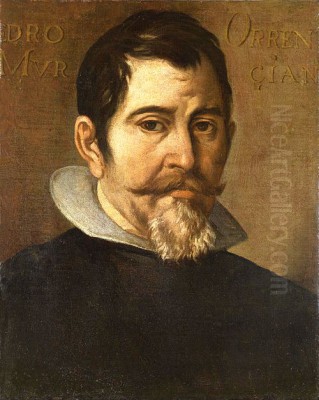
Pedro Orrente (c. 1570–1644) stands as a significant figure in the rich tapestry of Spanish Golden Age painting. Born in Montealegre del Castillo, in the region of Murcia, Orrente forged a unique artistic identity by masterfully blending the lessons learned during his formative years in Italy with the burgeoning naturalistic tendencies of his native Spain. Often dubbed the "Spanish Bassano" for his affinity towards the pastoral biblical scenes popularized by the Venetian Bassano family workshop, Orrente developed a distinctive style characterized by dynamic compositions, dramatic use of light reminiscent of Caravaggio, and a profound interest in depicting the textures and details of the natural world, particularly animals. His prolific career saw him active in major artistic centers like Valencia, Toledo, and Madrid, leaving behind a legacy of compelling narrative works that secured his place among the key painters of the Spanish Baroque.
Early Life and the Italian Journey
Details surrounding Pedro Orrente's earliest years and initial training remain somewhat scarce. Born around 1570, it is clear that his artistic ambitions led him away from his homeland relatively early in his career. Unlike many Spanish artists who received their primary training domestically, Orrente traveled to Italy, the undisputed center of the art world at the time. This decision proved pivotal, exposing him directly to the revolutionary artistic currents sweeping the peninsula at the turn of the 17th century.
His primary destination appears to have been Venice, a city renowned for its vibrant colorito and dynamic compositions. It was here, tradition holds, that Orrente entered the orbit of the Bassano family workshop, likely studying directly under or closely following the style of Jacopo Bassano (also known as Jacopo da Ponte) and his sons, particularly Leandro Bassano. The influence of the Bassano workshop is undeniable in Orrente's work, evident in his frequent choice of Old Testament subjects set within rustic landscapes, populated by numerous figures and, crucially, a detailed menagerie of livestock and domestic animals. These pastoral idylls, infused with religious narrative, became a hallmark of Orrente's oeuvre.
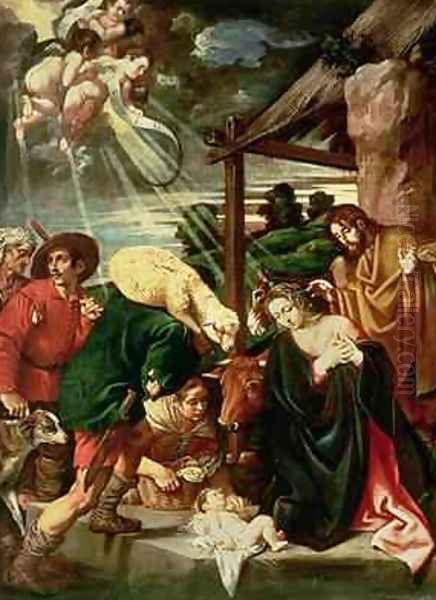
While some early accounts suggested a possible connection or tutelage under El Greco in Toledo before his Italian journey, stylistic evidence makes this unlikely as a primary influence. Orrente's grounded naturalism, earthy palette, and compositional structures differ significantly from the elongated figures, mystical light, and vibrant, almost acidic colors characteristic of El Greco. Though he would later work in Toledo, his core artistic DNA was forged in Italy, particularly under the spell of the Venetians. The Bassano connection remains the most convincing and visually supported link regarding his formal training.
Embracing Caravaggio's Shadow: Tenebrism and Naturalism
Beyond the Bassano workshop's impact on subject matter and composition, Orrente's Italian experience exposed him to another seismic force in early Baroque art: Michelangelo Merisi da Caravaggio. While it's uncertain if Orrente ever met Caravaggio directly or spent significant time in Rome, the Lombard master's revolutionary use of chiaroscuro – the dramatic interplay of light and shadow, often referred to as tenebrism – left an indelible mark on Orrente's style.
Returning to Spain, Orrente integrated this heightened sense of drama through light into his paintings. He employed strong contrasts, illuminating key figures and narrative moments while plunging backgrounds and secondary elements into deep shadow. This technique enhanced the emotional intensity and realism of his scenes, drawing the viewer directly into the depicted event. Unlike the often stark and brutal realism of Caravaggio, Orrente's tenebrism was frequently tempered by his Venetian-influenced sense of color and a slightly softer modeling of forms, but the dramatic potential of light remained a central tool in his artistic arsenal.
This adoption of Caravaggesque lighting, combined with the Bassano-inspired subject matter and a meticulous attention to detail learned from both Italian and potentially Flemish influences circulating at the time, formed the core of Orrente's mature style. His naturalism extended not just to the accurate rendering of animals but also to the depiction of human figures – their varied physiognomies, rustic attire, and expressive gestures contributing to the overall sense of lived reality within his biblical narratives.
Return to Spain: Valencia and the Ribalta Circle
Upon returning to Spain, likely in the early 17th century, Orrente established himself as a prominent painter. One of the key cities in his career trajectory was Valencia. This bustling Mediterranean port was a vibrant artistic center, home to a school of painters increasingly receptive to the new naturalistic and tenebrist currents emanating from Italy. Orrente's arrival coincided with the activity of Francisco Ribalta, another major figure in Spanish Baroque painting who had also absorbed Caravaggesque influences.
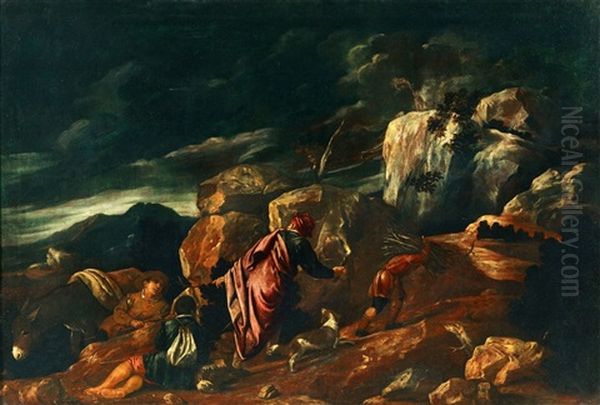
Orrente and Francisco Ribalta developed a close professional relationship, becoming leading figures in the Valencian art scene. Their shared interest in dramatic lighting and realistic depiction fostered a fertile ground for the development of the Valencian school. Orrente's presence undoubtedly reinforced the trend towards naturalism. He is known to have established a workshop or painting school in Valencia, further disseminating his style and techniques.
His interaction extended to other notable artists in the region, including Francisco Ribalta's talented son, Juan Ribalta, whose works sometimes show a stylistic affinity with Orrente's in their robust figures and dynamic compositions. Alessandro Loarte, another painter active in the region known for his still lifes and religious scenes, also moved within these circles. Orrente's influence was palpable, contributing significantly to the character of Valencian painting in the first decades of the 17th century. His works from this period often showcase his mastery of complex, multi-figure compositions, rich textures, and the integration of landscape and genre elements into sacred stories.
The "Spanish Bassano": Defining a Style
The moniker "El Españoleto Bassano" or the "Spanish Bassano" became attached to Orrente during his lifetime or shortly thereafter, and it aptly captures a central aspect of his artistic identity. This was not merely imitation; Orrente adapted the Bassano model to his own sensibilities and to the tastes of his Spanish patrons. He excelled at depicting Old Testament patriarchal narratives – scenes from the lives of Noah, Abraham, Jacob, Moses – setting them in familiar, almost contemporary rural landscapes.
These works are characterized by their narrative clarity and abundance of detail. Flocks of sheep, herds of cattle, donkeys, dogs, and fowl populate his canvases, rendered with remarkable accuracy and vitality. Orrente clearly delighted in observing and painting these creatures, often giving them significant prominence within the composition. This focus on animals and the rustic setting served multiple purposes: it grounded the sacred stories in a tangible reality, making them more accessible and relatable to the viewer, and it allowed Orrente to showcase his considerable skill in naturalistic representation.
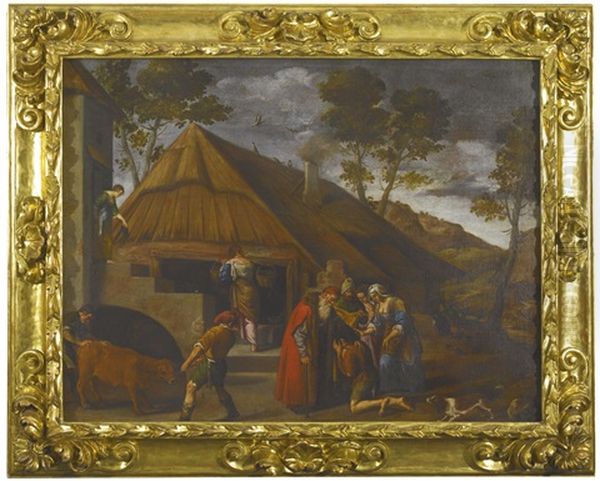
Works like Laban Searching for his Idols, Jacob Watering Laban's Flock, or numerous versions of the Adoration of the Shepherds exemplify this aspect of his style. The shepherds in the Nativity scenes are often depicted as rugged, contemporary peasants, surrounded by their meticulously rendered animals, bringing the divine event into a familiar, earthly sphere. His palette, while capable of Venetian richness, often employed warm earth tones – browns, ochres, deep greens – enhancing the pastoral atmosphere. The compositions are typically well-structured, guiding the viewer's eye through the narrative and the detailed environment.
Maturity in Toledo and Royal Commissions in Madrid
Later in his career, Orrente spent significant periods in Toledo, a city steeped in artistic history, most famously associated with El Greco. While Orrente worked there decades after El Greco's death, his style remained distinct from the Mannerist master. In Toledo, Orrente received important commissions, including work for the prestigious Toledo Cathedral, such as the Miracle of St. Leocadia. His presence in Toledo further cemented his reputation as one of Spain's leading religious painters. His works from this period maintain his characteristic naturalism and dramatic lighting, adapted to the specific requirements of large-scale altarpieces and devotional paintings.
Perhaps the pinnacle of his official recognition came with his involvement in the decoration of the Buen Retiro Palace in Madrid, a grand project initiated by King Philip IV and his powerful minister, the Count-Duke of Olivares. During the 1630s, Orrente was commissioned, alongside other prominent court painters like Vicente Carducho and the Italian Angelo Nardi, to contribute to the ambitious decorative cycles. Orrente's contribution included a series of paintings depicting the Labours of Hercules, mythological subjects that allowed him to showcase his skill in rendering dynamic figures and, naturally, animals (like the Nemean Lion or the Cretan Bull).
Although many paintings from the Buen Retiro have been lost or dispersed, Orrente's participation signifies his high standing. Around 1639, his status was further confirmed when he was appointed Painter to the King (Pintor del Rey), a prestigious title reflecting royal favor. This late phase of his career saw him operating at the highest levels of artistic patronage in Spain, contributing to the splendor of the Habsburg court. His style, while consistent, perhaps gained an added degree of refinement and monumentality suitable for these grand commissions.
Analysis of Key Works
Orrente's extensive output includes many notable paintings. A closer look at a few representative examples reveals the nuances of his style:
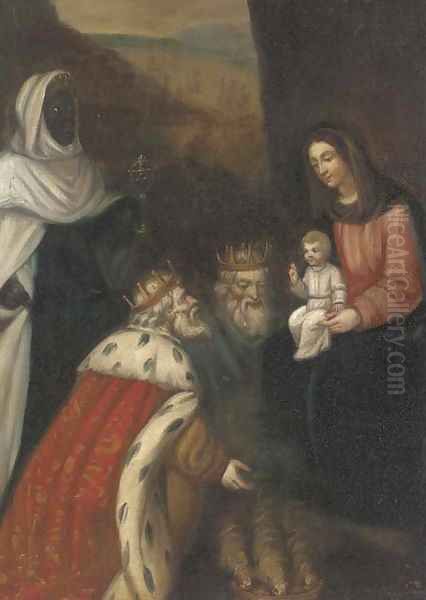
The Sacrifice of Isaac (c. 1616, Museo de Bellas Artes, Bilbao): This painting is often cited as a prime example of Orrente's engagement with Caravaggesque drama. The composition is tight and focused, capturing the climactic moment as the angel stays Abraham's hand. Strong tenebrism dominates, with light dramatically highlighting Abraham's face, Isaac's vulnerable body, and the arresting angel. The emotional tension is palpable, conveyed through Abraham's determined yet anguished expression and Isaac's resignation. The inclusion of the ram caught in the thicket, rendered with Orrente's typical attention to animal detail, fulfills the biblical narrative and adds a touch of rustic realism. The work successfully emulates Caravaggio's intensity while retaining Orrente's own handling of form and texture.
Martyrdom of Saint Sebastian (Valencia Cathedral): This subject, popular in the Baroque era, allowed artists to depict the idealized male nude in a context of religious suffering. Orrente's version presents the saint tied to a tree, pierced by arrows. The lighting emphasizes Sebastian's musculature and the pathos of his expression. While adhering to iconographic conventions, Orrente infuses the scene with his characteristic naturalism, paying attention to the texture of the tree bark and the landscape setting. It showcases his ability to handle large-scale figures with anatomical accuracy and emotional weight.
Adoration of the Shepherds (Museo del Prado, Madrid, and other versions): This theme was a favorite of Orrente's, perfectly suited to his "Spanish Bassano" style. His various interpretations typically feature the Holy Family in a humble setting, surrounded by a crowd of rustic shepherds and a lively assembly of sheep, goats, and often a donkey or ox. The figures are earthy and individualized, their faces reflecting awe and devotion. The Christ Child is usually the focal point, often illuminated by a divine light that contrasts with the surrounding shadows. These works are masterclasses in integrating religious narrative with detailed genre observation, particularly the loving depiction of animals.
Miracle of Saint Leocadia (Toledo Cathedral): Commissioned for a major ecclesiastical setting, this work demonstrates Orrente's ability to handle complex historical or hagiographic narratives. It depicts the moment when Saint Leocadia, a martyr from Toledo, miraculously rose from her tomb. Orrente organizes the numerous figures – saints, clergy, onlookers – into a coherent and dramatic composition, using light and gesture to focus attention on the central miracle. The architectural setting and rich vestments are rendered with care, demonstrating his versatility beyond purely pastoral scenes.
Workshop, Influence, and Artistic Context
Pedro Orrente was not only a prolific painter but also an influential teacher. His workshop, particularly active during his time in Valencia, played a role in shaping the next generation of artists. One notable figure believed to have studied with or been significantly influenced by him is Cristóbal García Salmerón, a painter from Cuenca whose works reflect Orrente's naturalism and interest in everyday details within religious contexts.
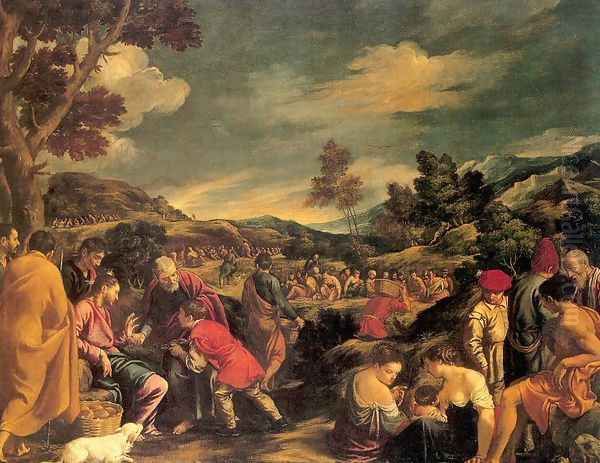
Orrente's impact extended beyond direct tutelage. His popularization of Bassano-style pastoral biblical scenes resonated with other Spanish artists. Esteban March, another Valencian painter known for his battle scenes and rustic genre paintings, clearly absorbed elements of Orrente's approach to landscape and animal depiction. Orrente's success demonstrated the market appeal of this blend of Italianate composition, Caravaggesque light, and detailed naturalism.
Within the broader context of the Spanish Golden Age, Orrente occupies an important position. He worked contemporaneously with giants like Velázquez and Zurbarán, and while his style differs, he shared their commitment to naturalism and the profound depiction of religious themes. He can be seen as a key conduit for Italian Baroque ideas into Spain, particularly the legacy of Bassano and the dramatic potential of tenebrism. His work provides a crucial link between the earlier generation of painters like Francisco Ribalta and the full flowering of the Baroque in Valencia and beyond. He interacted professionally with court painters like Eugenio Caxés, Vicente Carducho, and Angelo Nardi during the Buen Retiro projects, placing him firmly within the mainstream of Spanish art production in the second quarter of the 17th century. His style also finds echoes in the work of Neapolitan Spaniards like Jusepe de Ribera, who similarly combined intense naturalism with tenebrist lighting.
Later Life and Enduring Legacy
Pedro Orrente remained active into his later years. After his significant work in Madrid, he appears to have returned to Toledo, the city where he had spent considerable time and received major commissions. It was in Toledo that he died in January 1644. According to historical records, he was buried with honors in the Church of San Martín, a testament to the respect he commanded at the end of his life.
For a period after his death, while his paintings remained appreciated, his specific role and influence were perhaps overshadowed by the towering figures of Velázquez, Murillo, and Zurbarán. However, modern art historical scholarship has increasingly recognized Pedro Orrente's crucial contribution to the Spanish Baroque. His successful synthesis of Venetian pastoralism, Caravaggesque drama, and Spanish naturalism created a distinctive and influential style.
His legacy lies in his mastery of narrative, his exceptional skill in depicting animals and rustic life, and his role in transmitting and adapting key Italian artistic innovations for a Spanish audience. The "Spanish Bassano" was far more than an imitator; he was an original interpreter who carved out a unique niche, enriching the visual culture of the Spanish Golden Age with works that continue to engage viewers with their blend of sacred storytelling and earthly realism. His paintings are found today in major museums across Spain and internationally, including the Prado Museum in Madrid, the Museo de Bellas Artes of Valencia, the Bilbao Fine Arts Museum, the Louvre in Paris, and the Hermitage in St. Petersburg, confirming his enduring importance.
Conclusion: A Master of Narrative Naturalism
Pedro Orrente navigated the complex artistic landscape of the early 17th century with remarkable skill and adaptability. His journey to Italy equipped him with the tools of the Venetian colorists and the dramatic lighting of Caravaggio, which he then masterfully synthesized with the naturalistic impulses gaining traction in Spain. As the "Spanish Bassano," he created a popular and enduring genre of pastoral biblical narratives, filled with keenly observed details of rural life and, especially, animals. His work in Valencia, Toledo, and for the royal court in Madrid cemented his reputation as a leading painter of his generation. Through his own prolific output and the influence exerted by his workshop, Orrente played a significant role in shaping the course of Spanish Baroque painting, leaving behind a body of work celebrated for its narrative power, technical proficiency, and compelling blend of the divine and the everyday.